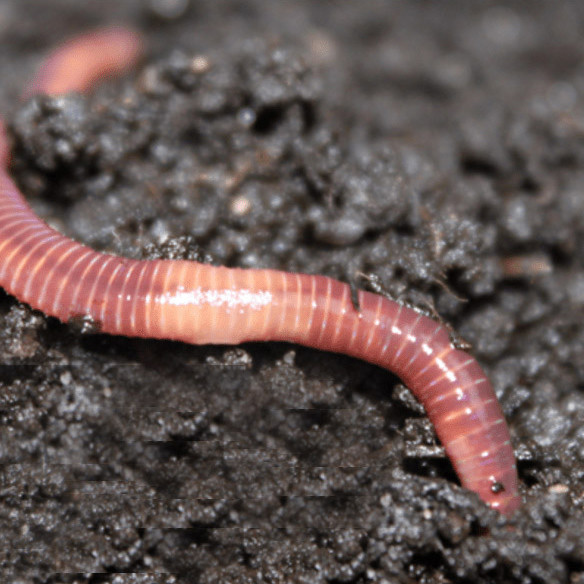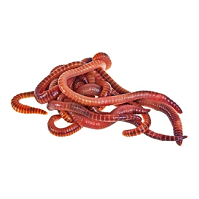Organic farming red worms: Sustainability made simple
Exactly How Red Wigglers Can Boost Your Organic Waste Recycling
Red wigglers stand for a pivotal component in improving organic waste recycling, properly transforming everyday kitchen area scraps and yard particles into important worm castings. Recognizing the intricacies of developing a vermicomposting system and the optimum care for these worms can dramatically enhance the benefits.

Advantages of Red Wigglers
Red wigglers, a type of composting earthworm, offer many advantages that make them indispensable in natural waste recycling. These worms can refine cooking area scraps, yard waste, and also paper products, changing them into nutrient-rich spreadings.
Moreover, red wigglers boost dirt aeration and drainage via their burrowing tasks, advertising a much healthier root atmosphere for plants. Their spreadings are rich in beneficial microorganisms and essential nutrients, cultivating robust plant development and enhancing dirt framework (red wigglers). Moreover, using red wigglers in composting is an ecologically pleasant option to chemical fertilizers, which can have damaging side effects.
Furthermore, vermicomposting with red wigglers is a low-maintenance and effective technique of recycling organic waste, making it easily accessible for families and communities alike. Their rapid reproduction rate ensures a constant supply for ongoing composting efforts, even more intensifying their benefits. Generally, red wigglers work as a critical part in sustainable waste administration and soil improvement methods.
Establishing a Vermicomposting System
Developing a reliable vermicomposting system calls for mindful preparation and factor to consider of numerous factors that add to its success. The foundation of a successful system starts with choosing a proper container. Options range from commercial containers to homemade choices, however it is crucial that the container is well-ventilated and properly sized to accommodate the number of red wigglers.
Next, the choice of bed linens product is crucial. Appropriate bedding includes shredded paper, cardboard, or coconut coir, which offers both a habitat and a source of carbon for the worms. The bed linens ought to be dampened yet not excessively damp to stop anaerobic conditions.
Keeping the optimal setting is important. Red wigglers prosper in temperatures in between 55 ° F and 77 ° F(13 ° C to 25 ° C )and need a pH level around neutral. Checking moisture degrees is also essential, as way too much moisture can bring about odor issues, while inadequate can dry out the worms.
Lastly, positioning the vermicomposting system in a shaded area shielded from direct sunshine will assist keep a secure setting. With these factors to consider in mind, one can properly establish a thriving vermicomposting system that boosts natural waste recycling.
What to Feed Red Wigglers
Feeding red wigglers the right materials is essential to maintaining a healthy vermicomposting system. These worms prosper on a diverse diet regimen mainly composed of organic issue, which includes vegetables and fruit scraps, coffee premises, smashed eggshells, and shredded paper. It is important to stay clear of feeding them meat, dairy, oily foods, or any processed items, as these can develop odors, draw in insects, and lead to a harmful atmosphere.
A well balanced diet plan for red wigglers promotes ideal food digestion and nutrient production. Goal for a mix of green products, high in nitrogen, such as veggie peels and yard clippings, and brownish materials, rich in carbon, like dried out leaves and cardboard. This balance ensures a sustainable food resource while preserving wetness degrees in the worm container.
Furthermore, it is recommended to cut or shred larger scraps to quicken decay and make the food extra easily accessible to the worms. On a regular basis monitoring the consumption price will assist determine the proper quantity to feed, stopping overfeeding and preserving a flourishing community. By offering a suitable diet, you not just sustain the health and wellness of red wigglers however likewise improve the efficiency of your vermicomposting efforts.
Maintaining Your Worm Container
To make certain the health and performance of your vermicomposting system, maintaining your worm container is essential. Normal monitoring of moisture levels is crucial; the bed linens needs to be moist but not soaked. If it comes to be as well damp, excess wetness can result in anaerobic conditions, damaging your worms. Conversely, if it is also dry, worms may become non-active or die.
Temperature level is one more critical factor. Ideally, the worm container need to be maintained in between 55 ° F and 77 ° F(13 ° C to 25 ° C) Severe temperature levels can emphasize or kill your worms. To attain this, position your container in a climate-controlled atmosphere away from direct sunshine or heat sources.
Aeration is important for oxygen flow. Gently transforming the bed linen with a yard fork every couple of weeks will help freshen the material and protect against compaction. Additionally, be cautious concerning the bin's odor. A foul smell may suggest overfeeding or a discrepancy in the carbon-to-nitrogen proportion. If this happens, decrease feeding and include more carbon-rich materials like shredded paper or cardboard.
(red wiggler worms)
Utilizing Worm Spreadings in Horticulture

Worm castings, commonly described as "black gold" by gardeners, are an extremely nutritious organic plant food that can significantly improve soil health and plant development. These castings are created by red wigglers as they digest organic matter, resulting in an abundant, dark, crunchy compound including helpful bacteria.
Integrating worm spreadings into yard dirt enhances its framework, oygenation, and wetness retention, producing an optimum atmosphere for origin advancement. The high nutrient content of worm spreadings, including nitrogen, phosphorus, and potassium, adds to vigorous plant growth and raised yields. Furthermore, worm castings include important trace element and enzymes that advertise the overall health and wellness of plants, allowing them to better withstand pests and illness.
Worm spreadings can be used straight to the dirt or mixed into potting blends for container gardening. A thin layer spread over garden beds or contributed to compost heaps can likewise improve the microbial activity and nutrient account of the compost. As a lasting and environmentally friendly fertilizer choice, worm castings support organic horticulture practices while reducing dependence on synthetic plant foods, therefore fostering a healthier ecosystem.
Verdict
Finally, the assimilation of red wigglers right into natural waste reusing practices provides a viable solution for boosting soil health and wellness and advertising sustainable gardening methods. By successfully disintegrating cooking area scraps and garden waste, red wigglers add to nutrient-rich worm castings that enhance soil aeration and wetness retention. This environment-friendly technique not only lowers landfill contributions my review here but additionally decreases the reliance on chemical plant foods, eventually cultivating much healthier communities and accountable waste administration methods.